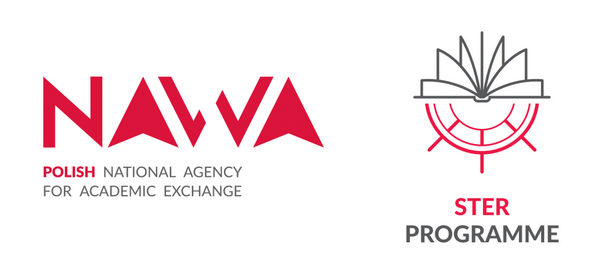Analytical Chemistry
Very wide scope of research covers:
- elaboration of new analytical methods in trace analysis
- design, construction and tests of new control measuring analytical instruments
- studies on the environmental quality – monitoring of the environmental pollution and the analysis of connected processes such as transport of the pollutants or their chemical and biological transformations
- research on new methods of fabrication of high purity reference standards
These general topics are pursued within large specialized research groups represented by their leaders. The research interests of Prof. P. Konieczka concentrates on the control and quality of analytical results as well as chemical metrology and statistics. Prof. A. Kot-Wasik applies new liquid chromatography, and combined LC-MS methods in the analyses of specific classes of compounds e.g. lipids in physiological fluids such as breast milk or blood plasma. Prof. B. Zabiegała studies the indoor and outdoor air quality by gas chromatography and a variety of combined methods; she specializes in the analysis of the endocrine disruptors, the ingredients of cosmetics and terpens. Prof. Ż. Polkowska is engaged in the environmental analysis of precipitation and atmospheric deposits, glaciers as well as drinking and bottled water by ion chromatography; she has been engaged extensively in the studies of the Arctic and Antarctica. Prof. A. Wasik specializes in the analysis of food additives with the use of chromatographic techniques often combined with mass spectrometry.
Keyword: trace analysis; environmental analysis; chromatography and combined techniques
Inorganic Chemistry
Major subjects that may be distinguished in the field of inorganic chemistry are as follows:
- structural studies of the low-valent phosphorus compounds as ligand in metal complexes; synthetic pathways to new phosphorus and boron compounds as efficient agents in activation of small molecules. The reactive compounds of low-covalent phosphorus, which can be used in organic synthesis and chemical catalysis are studied by Dr. Ł. Ponikiewski and by Dr. R. Grubba who is also a leader of the studies on the reactivity of new, non-metallic P/B catalysts of hydrogenation and activation of small inorganic molecules: CO2, CS2, SO2, N2O.
- synthesis of d-block metal complexes with S,N,O-donor ligands and the influence of the molecular structure onto the magnetic/luminescent/catalytic properties of mono- and polynuclear species is investigated by Prof. A. Dołęga, Dr. A. Pladzyk, Dr. K. Kazimierczuk
- the research on the controlled processes of formation of a crystalline solid from single molecules or "infinite" polymers, i.e. crystal engineering. The role played by intermolecular interactions such as: hydrogen, halogen, chalcogen bonding or layered association in the packing of particles is investigated by the research group of Prof. J. Chojnacki. Team members are interested in the presence of infinite substructures in crystalline bodies, their topology and symmetry as well as induction of chirality in crystals.
Keyword: non metallic phosphorus and boron catalysts; physico-chemical properties of coordination compounds; crystal engineering
Organic Chemistry
The scientists working in the field of organic chemistry are engaged in the development of procedures for the synthesis of new organic compounds:
- with potential application as new materials e.g. industrial solvents
- with potential biological activity and future application in medicine
These two important fields are represented by several research groups. The new materials such as surface active amino acid ionic liquids are synthesized under the guidance of Prof. M. Milewska who is also engaged in the rational design and synthesis of drug candidates for antimicrobial chemotherapy. Dr. T. Olszewska applies non-covalent interactions, in particular secondary interactions such as halogen and chalcogen bonds, in the construction of supramolecular structures. The efforts of Dr. Sliwka-Kaszyńska to study of the mechanisms of HPLC stationary phase retention based on calixarene derivatives may be also classified as a part of this research area.
Medicinal chemistry is developed by Prof. K. Dzierzbicka and Dr. G. Cholewiński, both engaged in the design and synthesis of angiogenesis inhibitors and immunosuppressive compounds, as well as (prof. K. Dzierzbicka) the synthesis of oligopeptides with potential application in cosmetics and dermatology. Prof. D. Witt developes challenging synthesis of biologically active polysulfides. Dr. S. Demkowicz expands the research into the area of the steroid-sulfatase inhibitors for the breast-cancer treatment. The main research topics of Dr. S. Makowiec is the synthesis of heterocyclic systems: ß-lactams and 1,3-oxazine based on acyl ketenes as well as the synthesis and functionalization of carbazolones which are the core of telomerase inhibitors.
Keywords: medicinal chemistry; drug design; halogen and chalcogen bonds in supramolecular structures
Physical Chemistry
Three important research topics developed in the Department of Physical Chemistry may be summarized as:
- thermodynamics and structure of solutions and intermolecular interactions in solutions - thermodynamic, spectroscopic and theoretical studies which include FT-IR spectroscopic studies and ab initio calculations of non-electrolyte and electrolyte hydration and hydrophobic hydration, including compounds of biological importance, simulations of water solutions of model substances and biological molecules using the molecular dynamics method, studies on thermodynamic properties and the structure of solvated ions, molar volumes, isobaric expansion and adiabatic compressibility of salts and individual ions in water and non-aqueous solvents as well as in two-component solvents. They are developed by Prof. J. Stangret, Dr. M. Śmiechowski, Dr. P. Bruździak, Dr. D. Warmińska, Dr. J. Krakowiak
- analysis of conformational changes and mechanical energy transmission in proteins as well as analysis of interactions between molecules in biological systems in the context of rational drug design e.g. s research on the specificity and dynamics of protein-DNA interactions on telomeres. The information is pursued with the use of theoretical methods: classical and quantum chemical (ab initio) molecular dynamics, calculation and decomposition of the free energy of molecular interactions based on statistical mechanic. The example of the rThe leader of the research is Dr. J. Czub
- Physicochemical basis of environmental analysis: The development of the new membranes in the solid phase microextraction technique (SPME) and further application in the determination of polar organic compounds, which is developed by Dr. A. Kloskowski.
Keywords: Hydration; Molecular dynamics of biological interactions; SPME membranes



